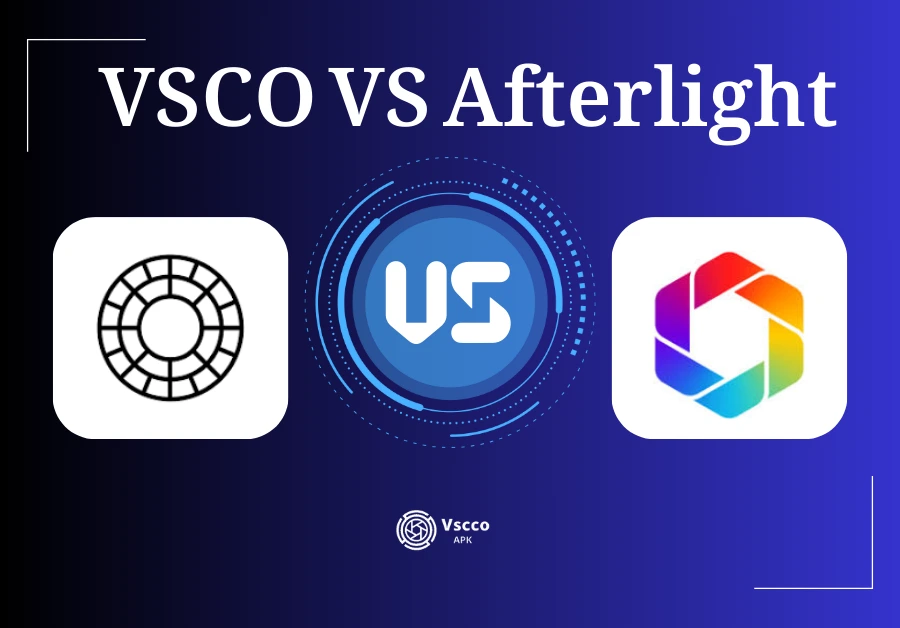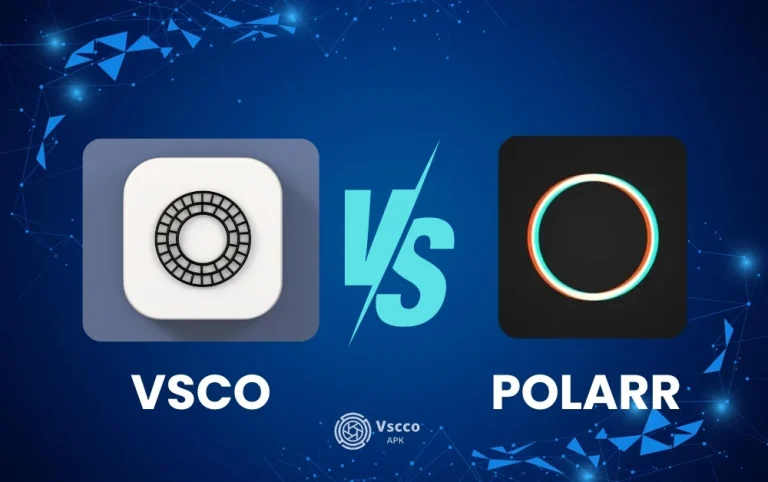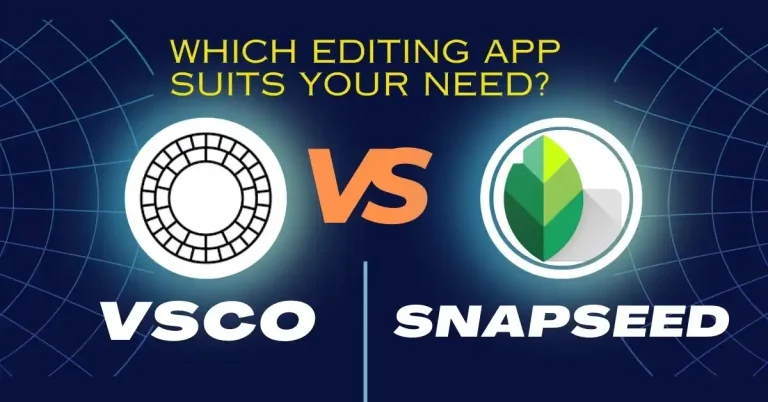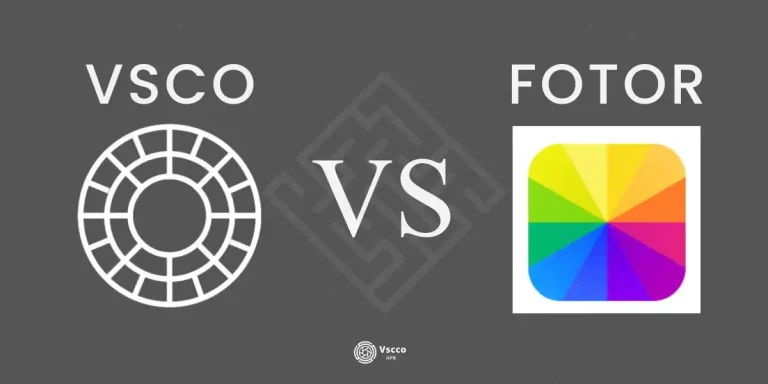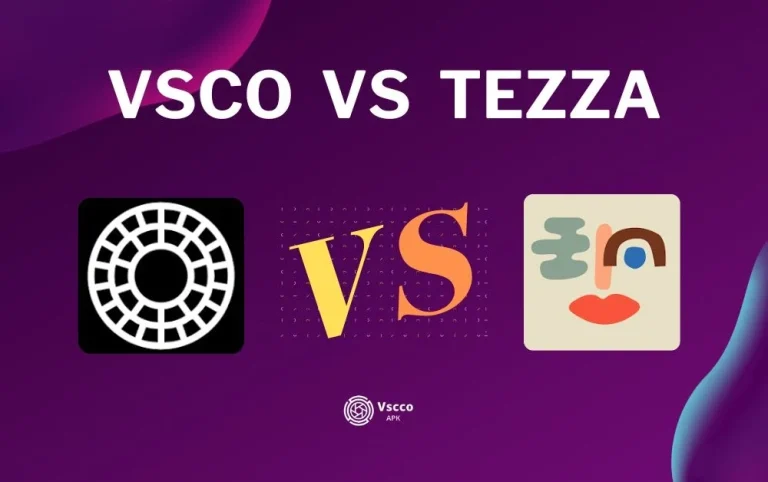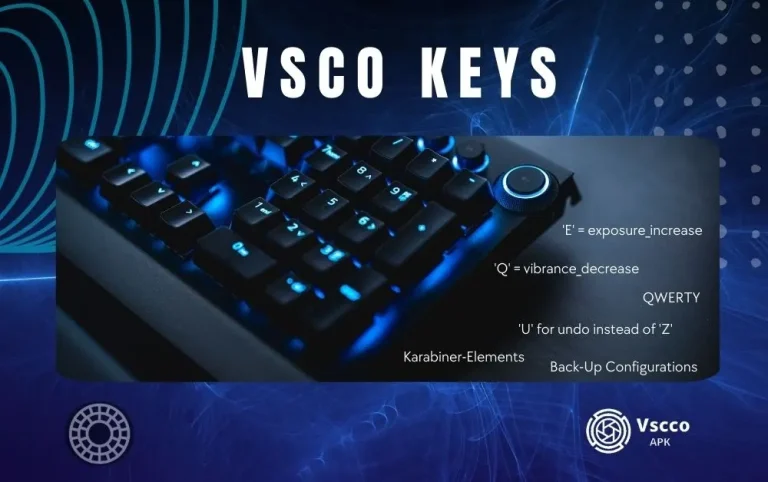VSCO VS Afterlight-A Comprehensive Comparison
A lot of people have trouble editing their photos so that they stand out on the internet. Instagram and social media platforms encourage creativity. However, their basic editing tools rarely produce the results we’re looking for. When you’re trying to boost the colours of your photos or create a retro film style, the standard filters aren’t sufficient. For colour boosting in your photo editing, applications such as VSCO and Afterlight are available, providing more sophisticated tools. The most difficult part is, of course, deciding which one is best for your requirements.
VSCO VS Afterlight-the solution is straightforward when you know what each app can offer. VSCO is a great choice for people who like rapid, consistent photo and video editing with professional filters that are pre-made and commonly called presets. It’s simple to use even for novices and perfect to create a cohesive look across your photographs. Afterlight, on the contrary, gives control over your creativity with tools such as the use of curves, double exposure, and textures. Both apps offer distinct options, so the choice is based on the amount of control you’d like to have in your editing.
Overview of VSCO
In the process of VSCO VS Afterlight lets first discuss about VSCO. VSCO is among the most well-known applications for editing videos and photos.VSCO is created to improve your photos by using a variety of editing tools and filters. It is distinguished by its simple interface and clean design. It has over 200 filters that recreate the look and feel of different films, like the traditional Kodak or Fuji films. The VSCO X feature allows users to apply professional-quality effects without difficult adjustments. Beyond filtering options, VSCO also includes essential editing tools, such as contrast saturation exposure and sharpness.
The free version of VSCO offers access to the basic filters. However, a subscription allows access to the full range of presets along with more advanced editing capabilities. In addition, VSCO allows users to edit videos, which is a feature that is not often available in other applications.
VSCO’s focus on community makes it more than a tool for editing. It’s a community-based tool of VSCO Spaces that allows users to not only publish their creative work but also enables users to get feedback from other users. It is especially suited for those who would prefer an all-in-one program that’s easy to use and allows quick editing with an elegant finish. If you are looking to achieve ease of use when it comes to your images, VSCO is a great option to look into.
Overview of Afterlight
Afterlight is a multi-faceted photo editing application. It is renowned for its broad selection of filters as well as advanced editing tools. With over 130 filters available, Afterlight lets users fine-tune their images by combining various adjustments and applying distinctive textures, such as the effects of light leaks, dust, and film grain. One of the most notable aspects of Afterlight is the “Fusion” tool, which allows you to design your own filters by mixing multiple effects. It provides users with artistic flexibility and freedom of editing.
Alongside filter presets, Afterlight offers tools, including curves, specific colour adjustments, and double exposure. These tools provide greater control over the editing process. They are ideal for those who wish to achieve certain looks or replicate analogue photography. Afterlight also allows RAW editing of photos, which will enable users to export and import high-quality pictures.
Suppose you’re a professional photographer or simply a person who likes editing photos on the go. In that case, VSCO provides options for more thorough and artistic editing.
Key Features of VSCO vs Afterlight
When it comes to VSCO VS Afterlight, the two apps have distinctive features that can enhance users’ editing experience. VSCO is renowned for its user-friendly interface and vast selection of presets. It is particularly admired for its film-like effects of top quality, like the Fuji Pro 800Z, Fuji Provia 400X, Kodak Ektar, Kodak Portra 160, Ilford HP5, Fuji Neopan 1600, recreation of Kodak Porta 160 film, and its extensive range of tools for colour correction.
Afterlight offers creative control, with more than 130 filters, as well as advanced options such as dual exposures, grain texture, and custom “Fusion Filters.” Both apps work on iOS and Android platforms. However, VSCO excels due to its ability to modify video and images effortlessly.
VSCO vs Afterlight-Filter & Preset
As we just discussed, VSCO comes with a wide range of filters, including the well-known KP9 filter, which gives you a vibrant film-like appearance. The presets are simple to apply and typically require only minor adjustments, which makes VSCO an ideal choice for users who want polished results. On the other hand, Afterlight offers users the ability to mix effects, filters, and textures to make distinctive appearances.
Editing Tools Comparison
VSCO comes with simple but effective editing tools, such as exposure contrast, saturation, and white balance, making it ideal for beginner as well as casual users. Additionally, it comes with advanced tools such as sharpening tools and manual adjustments to white balance to give professional-level control over editing. Afterlight’s tools like curves, gradient maps, and the Chroma Tool come with sophistication and charm. These tools are especially beneficial for those who need control over the editing process.
Interface and User Experience
VSCO is built with a clean and minimalist interface that is easy to navigate. Its minimalist layout guarantees an enjoyable user experience, particularly for those who want easy, simple, but professional-level photo editing. Afterlight, On the contrary, features an easier interface and offers many options that are appealing to experienced users. In spite of the extra options, the layout of Afterlight remains accessible, although it might take some time to learn. If you’re looking for easy, quick editing, VSCO’s minimalist layout is the best option.
Editing Styles & Effects-VSCO vs Afterlight
While comparing as VSCO VS Afterlight both VSCO and Afterlight provide a variety of editing techniques and features; however, their methods of applying filters and presets are different. VSCO is renowned for its film-themed filters, which give a natural, clean style. Filters such as KP9 of Kodak, Cinestill 800T and Fuji Superia Xtra 400, and Agfa film, providing your photos with an old-fashioned look with vivid colors and smooth, natural textures. Afterlight also has films-like filters, but without a wide range, users may feel frustrated by limited choice.
Colour & Exposure Adjustments
VSCO VS Afterlight-In the realm of exposure and colour adjustments, VSCO offers essential tools. These tools are user-friendly and ideal for novices. The manual white balance and sharpening tools provide more control for those looking to enhance their photos.
Afterlight’s Chroma tool is just Amazing. The precise editing options give customers the possibility to modify the entire aspect of their image from exposure to colour, which makes it ideal for users who want to blend it with professional editing.
Special Effects: Dust, Grain, Light Leaks, & More
VSCO VS Afterlight-VSCO provides a variety of effects, such as its grain tool that recreates the look and analogue feel by adding visual texture. Afterlight offers an assortment of special effects. It offers adjustable dust textures, light leaks, and unique features such as double exposure and shifts in color. Suppose you’re looking for striking, dramatic edits. In that case, Afterlight offers reasonable options, but VSCO makes things easier by providing basic and advanced-level effects.
Performance & Accessibility
Both VSCO and Afterlight work well on iOS and Android devices; however, they differ in terms of accessibility. VSCO is accessible for iOS and Android platforms. Still, with the free version, VSCO offers limited features, so a subscription plan is required to get complete access to its huge collection of presets with advanced editing tools. Afterlight is available for iOS and Android with an affordable, one-time purchase option.
Platform Availability (iOS, Android, Desktop)
VSCO is available through iOS and Android, along with desktop capabilities. Sharing and viewing photos through VSCO’s website is also a milestone in its success.
Afterlight, however, is different; it also has a desktop version that gives users an additional editing area.
Both apps are mobile-friendly. However, VSCO’s desktop edition adds a level of flexibility that Afterlight cannot offer.
VSCO VS Afterlight-Subscription Models & Pricing
VSCO runs on the freemium model, which includes an unpaid version that provides basic editing tools and presets. To get access to its entire range of more than 200 filters and more advanced features, you must sign up for $7.99 each month or $29.99 annually.
Afterlight, however, provides a much more simple pricing structure. It’s available for a one-time payment of $2.99, and no subscription is needed. Afterlight also has subscription plans that give users full use of premium functions as well as additional content.
VSCO VS Afterlight-What Is Right for You?
Choosing whether to go with VSCO or Afterlight depends on the features you are looking for in the photo editing software. VSCO is ideal for those who seek simplicity and speed. If you’re starting or want to edit your photos with minimum effort, VSCO’s library of 200+ presets, like C1, A6, C1, KP9,FS1, C1, A6, HB2 and many, many more, is a great choice. VSCO is also a worthy choice for those who prefer a simple interface and a community of artists to collaborate on their projects. VSCO’s focus is on analogue-style filters, and its minimal style makes it a perfect option for those who want simple, natural, Professional Photo and video editing tools.
However, Afterlight is better suited to users who love experimenting with new features. If you’re a fan of making custom designs, Afterlight’s Fusion Filters let you mix different effects. Afterlight is a good option for people who need all-encompassing editing with additional options for fine-tuning their photos.
User Reviews and Community Insights
In the light of VSCO VS Afterlight, feedback from users can provide valuable insights. A lot of VSCO users love the simplicity of use and professional quality filters, such as C1 or KP9, that can quickly improve their images with only minor adjustments. The app’s community features also get praise, and users appreciate being able to upload photos and receive feedback from other users. VSCO’s simple interface and the capability to speedily enhance pictures make it a favourite among photographers as well as social media users.
Users of Afterlight praise the application for its editing capabilities as well as the reasonable selection of creative options. Some users may feel that the interface is more complicated, particularly for people who are used to VSCO’s simplistic layout. But, its feature set is a popular choice for photographers who wish to enhance their photography abilities to the next level.
Summary, key Differences-VSCO vs Afterlight
When you compare as VSCO VS Afterlight, it’s apparent that each application has its advantages that can be tailored to specific user requirements. VSCO is popular due to its user-friendly interface and its large selection of presets like AU1, AUS, AV4, AV8, FA1, FF5, FN16, FP1, FP2, FP4, FP8 and B1, B5, F2, G3, M5, M3, P5, T1, X1, and many more. VSCO’s professional-level presets can quickly improve images with minimal modifications. Its extensive filter library that includes over 200 presets that makes it an ideal choice for Professional photographers. In addition, VSCO offers community features that allow users to post and receive feedback on their images.
Afterlight’s features offer multiple effects, and its tools, such as double exposure or leaks of light, provide more flexibility in modifications.
Conclusion
In the discussion of VSCO and Afterlight, the choice is based on your preferences for editing and the degree of control you want. VSCO’s user-friendly interface and intuitive features are ideal for those looking to make their photos look just great. VSCO’s powerful community feature is also a great plus point.
Afterlight provides tools such as dual exposure filters, fusion filters, and colour-shift options. These tools give you the ability to make distinct edits. If you’re someone who likes simplicity, a large variety of professional-grade presets, and seamless connectivity with other social media platforms, VSCO will likely meet your requirements more effectively.
In the end, both applications have strengths. Suppose you want to find a balance between ease of use and editing tools capabilities. In that case, VSCO stands out as a good and reasonable choice for most photographers.

